“It occurred to me that to really appreciate a tree one should spend more time experiencing the world they way it does, which means holding still.” -Nancy Ross Hugo, Seeing Trees
The second book I have been working on for my installation “Field Guides” for Art on the Trail at Lake Roland Park is at the almost done phase. I’m in the middle of binding all the pages together in an accordion structure. I took photos of the pages before the binding as each page could stand on its own. The overall book is made out of natural items that I picked up off the ground or collected.
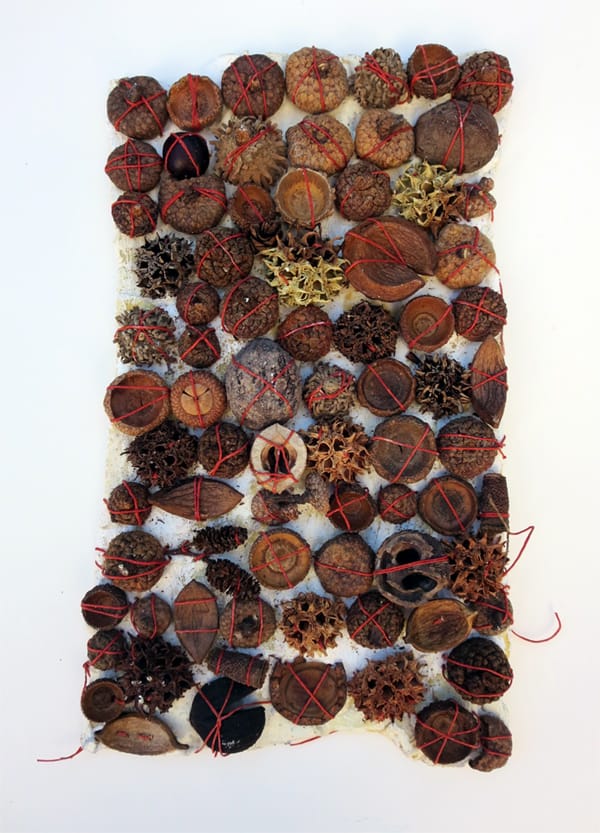 alder, southern magnolia, oak, black walnut, sweetgum, Hickory, sawtooth oak, southern red oak, and human bottle cap litter
alder, southern magnolia, oak, black walnut, sweetgum, Hickory, sawtooth oak, southern red oak, and human bottle cap litterOne of the things that I have really loved about working on this is that I have learned so much. I’ve learned the names of trees and little details that help to identify them. I’m finding out that I like to know the names of things. The knowledge makes them feel like old friends I’ve come upon rather than just a crowd of indistinguishable trees. Sure, I’ve known the basics, oak, maple, those are the easiest. But I had no idea there was such a diversity of oaks. And that there were such a variety of acorns and that their hats can be so different: some are bumpy and some have these crazy little curls, some of the nuts are long and green and others are small, brown compact balls. That a sweetgum gumball is masterfully engineered with chambers wherein the winged seeds rest. That inside the prickly furry ball of the Chinese Chestnut is a completely smooth brown chestnut. When you look close, I mean really close, a whole new complicated world of a single tree emerges.
This page above is the back of a page shown below and on it I wanted to allude to the secret language of trees. Well, maybe not so secret, as once you learn a little bit, the trees communicate so much. Curiosity and the willingness to slow down and really see will take you a long way.
“…through intimate viewing, one’s sense of trees as a living, breathing organisms, as opposed to inanimate objects, will be enhanced.”- Nancy Ross Hugo, Trees Up close
Just a few days ago I was in my backyard and this huge gust swept through and I looked up at the sky……and it was such a sight. The whole sky above me was filled with flying helicopters seeds. I had just read a passage from one of Nancy Hugo Ross’ books that called these winged seeds ’embryos’ and the thought that I was standing beneath a cloud of embryos was so odd and funny and beautiful to me. When I was making this page I noticed for the first time in my life how there wasn’t just one type of helicopter seed, they were very different depending on which kind of maple tree it came from. It’s common sense! But I had never taken the time to truly look.
There are two more pages that deal more with the insect world and I’ll save that for the next post. And hopefully I’ll be done with the binding by then too.
“The most effective way to save the threatened and decimated natural world is to cause peope to fall in love with it again, with beauty and reality.” – Peter Scott

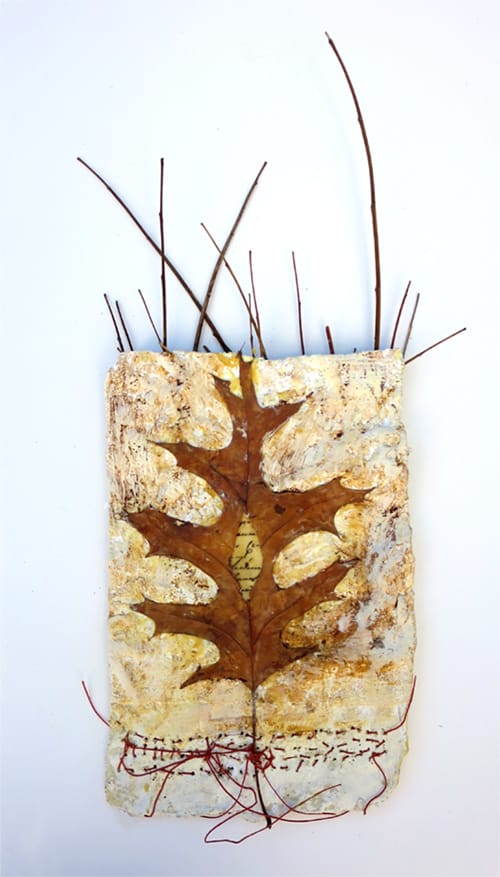
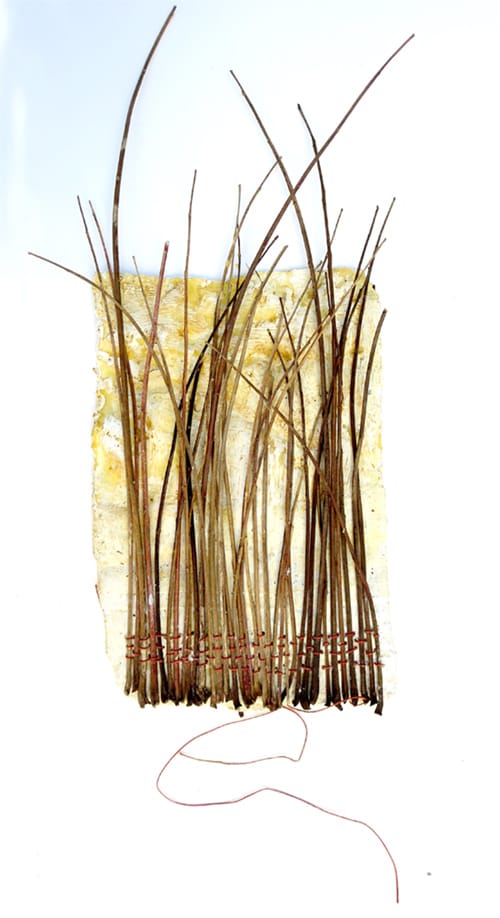
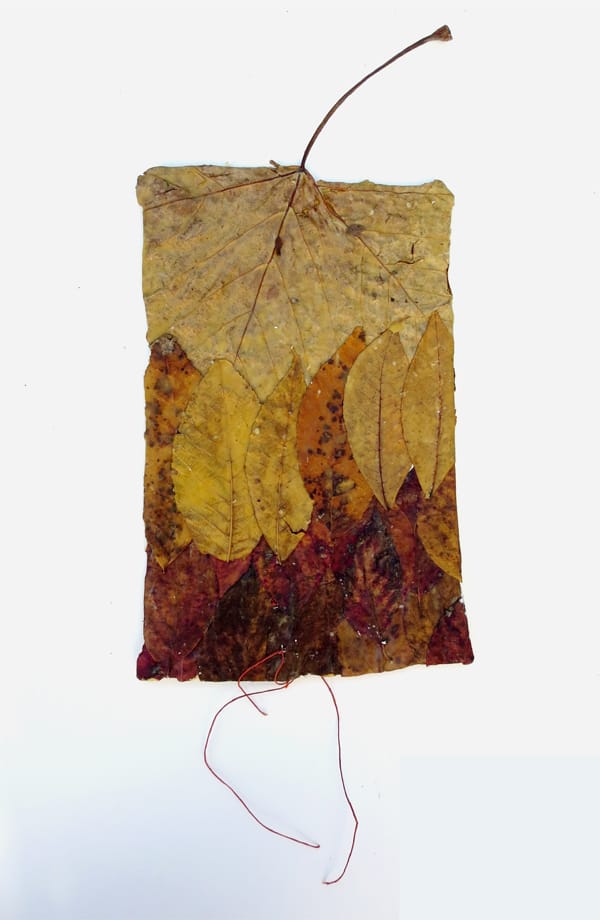
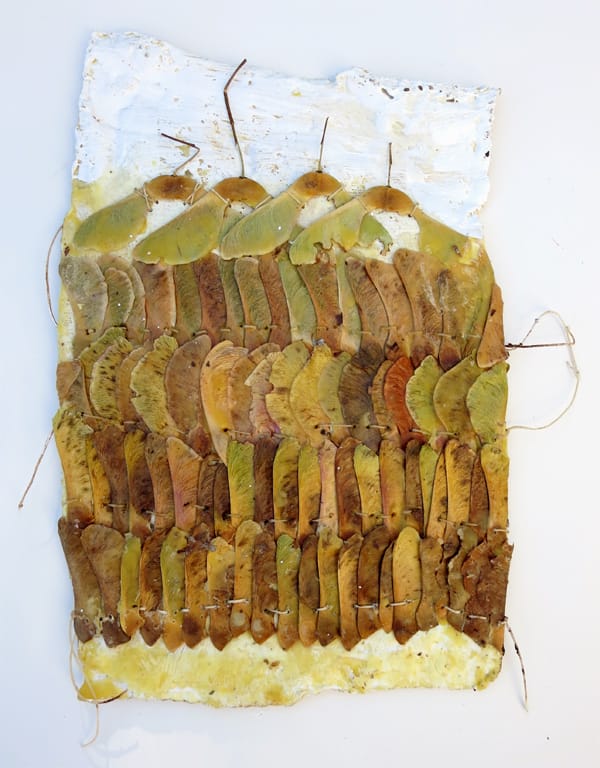

What an inspiring & beautiful post … has been a delight to stop by here today!
And what a wonderful project to sink ones teeth into. I want to go out & look
more closely at my ‘helicopters’ now ;>))
Bridgette–these are just magical! I especially love the leaf with the little secret compartment that shows handwriting inside. Definitely the secrets of the trees. You must be so energized by this project. Truly a labor of love.
Oh, Bridgette! I LOOOOVE what you’re doing! All of it. The collecting, the stitching, the learning, the assembling, the presentation. It’s going to be so great! Thanks so much for sharing what’s going on…a real joy to follow along!
Really beautiful work!!
Bridgette, these are just wonderful and I love your sense of awe in what you are learning. xox
Love the backs just as much as the fronts.
Fantastic work. In place of your maple ‘helicopters’ my garden becomes of blanketed at times in what I have always called ‘windmills’, from nearby large sycamore trees. I shovel up bucketfuls of them each year. They root easily and I have to go round pulling out the little trees before they grow into big ones! I know what to do with my buckets of windmills next year. 🙂